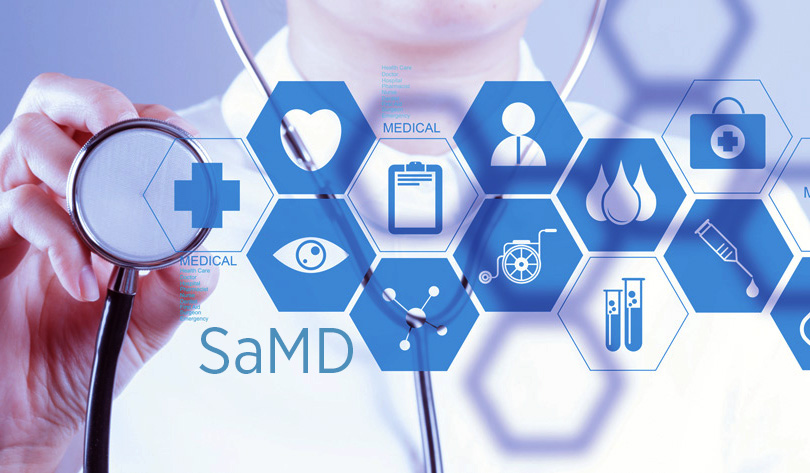September 26, 2019
Want to be part of FDA’s SaMD precertification program? Get your quality management system up to par.
Software as a medical device (SaMD) is a growing sector in medical device technology. Through the use of artificial intelligence and machine learning, SaMD has the power to influence health on a global scale as well as allow for personalization in medicine and life-saving therapies.
Medical device companies developing these products can take advantage of FDA’s new programs designed to advance trusted companies so they can get products to market efficiently and effectively.
Equally important, if you want to be part of the SaMD trend and its accompanying regulatory pathway, FDA is clear: make sure your quality management system is exemplary.
The Software as a Medical Device Precertification Program
Software as a medical device is defined as “software intended to be used for a medical purpose that is not part of the hardware of a medical device.” Product examples might include applications to process or view medical imaging on a mobile device, treatment planning applications that include AI, software that regulates implanted devices such as pacemakers, and software used to calculate BMI,heart rate, or track insulin levels.
The SaMD precertification program is part of the FDA’s ongoing modernization efforts. Part of this effort is to introduce a new regulatory paradigm for medical technology for wellness, treatment planning, remote drug delivery, and digital health.
Manufacturers eligible for the SaMD program can essentially fast-track certain aspects of the regulatory process. It employs aspects of the De Novo pathway and responds to FDA acknowledgement that software is subject to rapid and frequent updates. The program allows product developers to implement new advances in a timely manner.
Recently, FDA released three new documents that outline the regulatory framework, a test plan, and a working model for implementation for precertification. In these documents, FDA drives home the single most important aspect of participation in the precertification program and ultimately, its standard of quality in all aspects of SaMD development.
Quality and Organizational Excellence
At the heart of the documents is the message that manufacturers who are part of the pre-cert program must “demonstrate a robust culture of quality and organizational excellence.”
The program embraces a Total Product Life-cycle (TPLC) approach so manufacturers can evaluate SaMD products throughout their life-cycle. Tasks such as evaluation, documentation and monitoring of a software product from its pre-market development to post-market performance must be demonstrated. Participating organizations must also demonstrate a commitment to excellence.
Certain elements (e.g., software design and validation, as well as other aspects of quality system regulation compliance) for an SaMD can be evaluated at the organizational level. This “Excellence Appraisal,” then enables device makers to streamline a manufacturer’s De Novo submission.
Five Principles of Excellence
Firms in the SaMD program must be able to show adherence to “five principles of excellence.” Although FDA is still exploring what each of these principles would mean in practice, employing a modern quality management system should give organizations the right tools to meet any final objectives within the eventual regulations. By using an enterprise quality management system (EQMS), a device manufacturer can help ensure excellence at all levels of an organization.
- Patient safety. An EQMS enables faster response times to complaint handling and adverse event reports, promotes more expeditious recalls and other appropriate actions to ensure patient safety.
- Product quality. Streamline change management and document control through an EQMS to improve product quality and ensure coordination across the organization.
- Clinical responsibility. In addition to integrated corrective and preventive actions, EQMS will assist in managing a unique device identification (UDI) system to promote traceability of devices and patient outcomes.
- Data Integrity. An EQMS enables a central hub of quality data by breaking down silos and centralizing data, thus reducing the risk of inconsistencies, errors and multiple document versions.
- Proactive culture. Centralizing processes and knowledge transfer establishes the foundation of a proactive business culture and sets the stage for a robust quality culture.
Lingering Uncertainties
The SaMD precertification program still has a lot of unanswered questions. FDA will continue to seek public comment and stakeholder input on how to develop the program. The agency is planning new activities and programs for future SaMD applications. Although there is no regulatory standard as of yet, participants are being asked to describe, define, and document their methodology, as consistent with a quality manufacturing system. Because of frequent changes and additions to the program, manufacturers should be in constant contact with the FDA, vendors and consultants about regulations.
Conclusion
Quality practices at the organizational level help create the foundation of any quality improvement practice. Building a culture that advocates and embodies the true value of quality is essential for the application and support of new technologies such as SaMD. Applying these principles through demonstrated practice in an automated electronic quality management system is fundamental to modern business, particularly in high-risk industries such as medical device manufacturing.
Resources:
- FDA Software Precertification Program: Regulatory Framework for Conducting the Pilot Program within Current Authorities: https://www.fda.gov/media/119724/download
- Digital Health Software Precertification (Pre-Cert) Program: https://www.fda.gov/medical-devices/digital-health/digital-health-software-precertification-pre-cert-program


